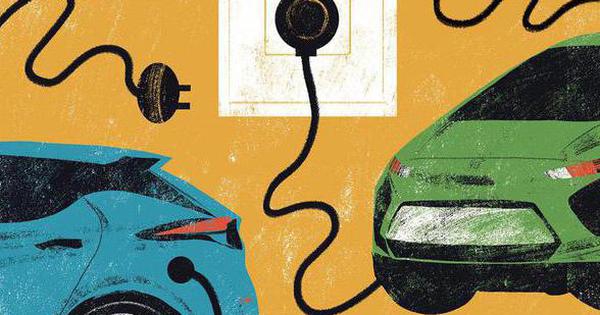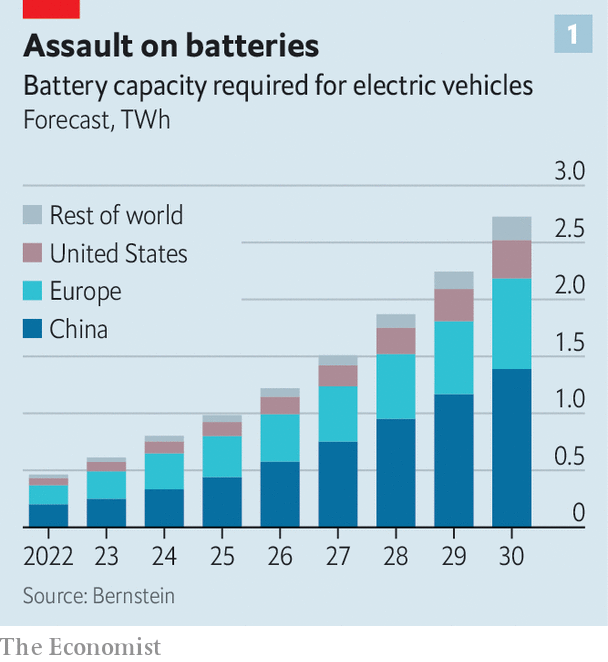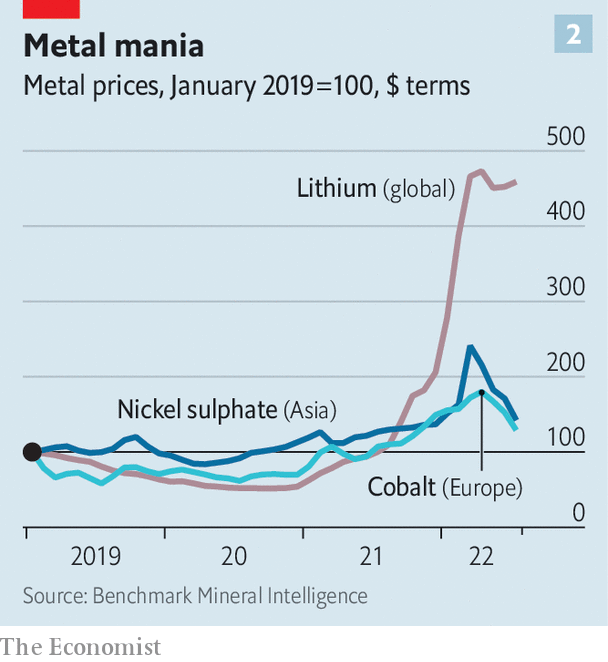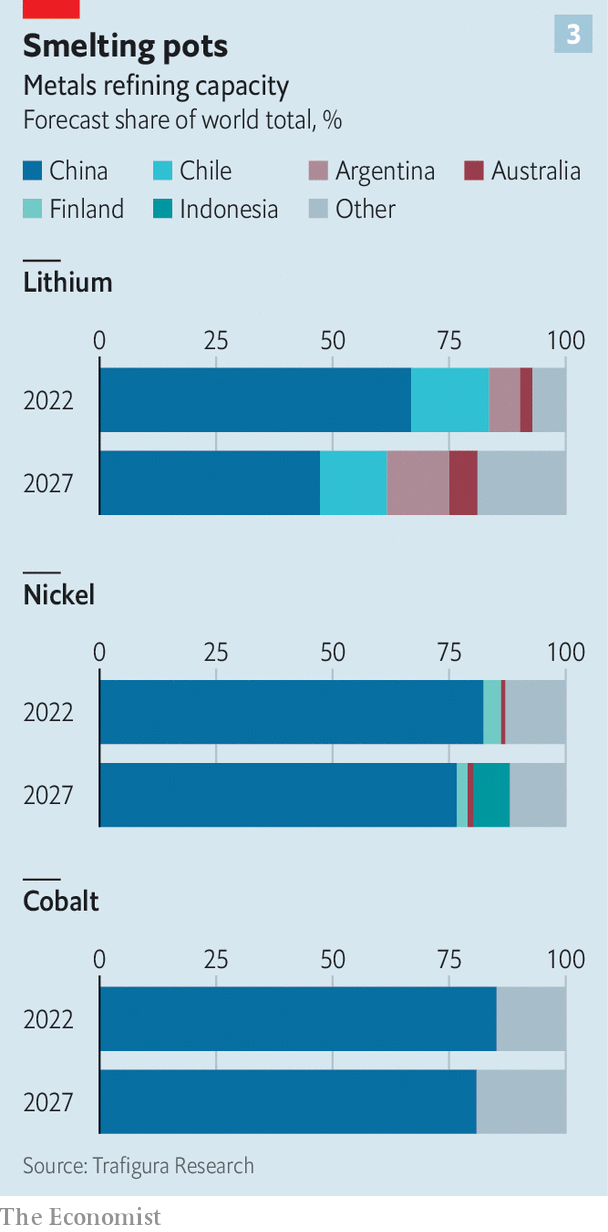What is the future of the electric vehicle industry?
- Tram Ho
The electric vehicle industry is really booming as countless brands flock to this new technology. Even many analytical reports are said to not follow the growth rate of this industry. According to Bloomberg news agency, the rate of electric vehicle use will increase from less than 10% in 2021 to 40% in 2030.

Depending on the source, estimates of the number of electric vehicles in circulation currently range from 25-40 million units.
However, according to The Economist, tens of millions of vehicles, along with countless future electric cars, are and will need countless batteries. As a result, according to Bernstein’s estimates, the demand for electric batteries will increase ninefold by 2030, with total electricity generation reaching 3,200 GWH. Rystad’s estimate is around 4,000 GWH.

Forecast of electric vehicle battery demand in markets and globally (TWH)
It should be reminded that the current battery supply chain is not simple, stretching from Lithium mines in Chile to the plains of Hungary, where the world’s largest battery factory CATL comes from China.
In addition, in the context that Western car manufacturers want to reduce their dependence on batteries in China, many experts predict that the price of this product will increase in 2022, the first time in more than 10 years.
Even in June 2022, Bloomberg cast doubt on previous predictions that an electric car would be as cheap as a traditional petrol car by 2024. Even goals like a ban on new car sales Running fossil fuels by 2035 of the European Union (EU) is also assessed as not possible.
False promises
In theory, the electric vehicle industry will have countless battery plant projects. Benchmark Minerals’ report shows that if all commitments come true, there will be about 282 large-scale battery factories going into operation by 2031, bringing the total global battery power to 5,800 GWH.
However, reality is not like a dream.
Bernstein’s calculations show that the six main battery manufacturers, BYD and CATL from China, LK-Samsung and SK Innovation from South Korea, and Panasonic from Japan, have a combined capacity of 1,360 GWH batteries by the end of the decade. .
As such, thousands of GWH batteries will depend on new player commitments, which is an uncertainty in this investment-intensive industry.
Research by consulting firm S&P Global Mobility shows that on average, a large battery factory (Gigafactories) will take at least 3 years to build, and a few more years to run at full capacity.
In addition, the unique technology of each brand makes it difficult for this company’s cell battery to be replaced by another brand’s, thereby further constricting the battery supply.
Therefore, according to the Economist, the actual supply of electric batteries in 2030 will be lower than many people’s expectations.
Besides, China’s dominance in the battery industry is also a problem. Benchmark Minerals predicts that even if China’s battery market share declines in the next 10 years, it will only fall from the current 80% to less than 70%. The US will account for about 12% and the rest will belong to Europe.

Prices of raw materials for battery production. January/point
As such, electric cars globally will still be heavily dependent on China, and with trade or geopolitical uncertainties, it is expected that electric cars will be as cheap as traditional internal combustion engine cars in the near future. unlikely.
Lack of resources
Another factor that becomes the fatal weakness of electric vehicles before traditional cars is the raw material to make batteries.
For example, Nickel, thanks to Indonesia’s supply, currently accounts for 37% of the total global nickel supply, and the battery supply chain is currently quite stable. However, if you look closely, the quality of nickel here is quite low for making batteries. They can only be made into battery components after being purified a few times, thereby emitting three times more greenhouse gas emissions than normal into the environment compared to high-quality Nickel from Canada or Russia.
With such environmental pollution, the production of batteries for electric vehicles may face obstacles in the West, where environmental activists have a huge voice.
Then the Cobalt material is also the problem. The supply of this material is not really abundant. Mines in the Congo and Indonesia can meet the global battery industry demand until 2027, but after that the story will be more complicated because factories will have to import goods from mines that use laborers. child abuse as well as violations of occupational safety standards.
Many Western automakers have said they won’t buy Cobalt from such mines, but instead where it gets its supply from is unclear.
However, in addition to Nickel and Cobalt, Lithium is the material that causes people the most headaches. The Economist reported that many manufacturers had to cut production because of a lack of supply of this material.
According to the commitments, Lithium supply will be in excess by 2026 thanks to new mines. Ironically, most of these new mines are located in China, where low-quality Lithium means more refining and production costs than mines in Australia or Latin America.
Commodity expert Socrates Economou of Trafigura estimates that the price of each ton of Lithium mined from these new Chinese mines will be at least $35,000, three times higher than the 2021 price.
Meanwhile, high-grade Lithium sources from Chile or Australia are also difficult to exploit. The Chilean government is planning to nationalize all natural resources while the mineral tax in Australia is among the highest in the world.

China dominates in battery recycling
The situation is so bad that the world’s second largest Lithium trader Albemarle had to warn at the end of July 2022 that despite efforts to increase supply, electric vehicle manufacturers will face a battle. searching for materials for batteries from now to 2030.
Please be reminded that to build a standard mining mine will take 5-25 years depending on the situation, so there will not be much time to find and exploit new mines quickly in the next 10 years. Therefore, many investors as well as corporations are quite cautious when pouring money into this field even though they know the electric vehicle industry is booming.
In addition, environmental and political factors also make mining investment not easy. Many small mines cannot find investment capital while the big guys are quite picky with a risky industry, easy to lose image and not friendly to the environment.
For that reason, from 2021 to now, there have only been 20 investment projects to exploit high-quality nickel for batteries and 5 other projects for Lithium and Cobalt.
Mick David of mining firm Vision Blue Resources is skeptical about the ability of these projects to supply with the current booming market demand. Recycling is not expected to help the battery industry supply much before 2030.
Currently, many technologies have been developed to reduce the need for scarce materials, but that means that the efficiency of the battery must also decrease. The sodium cos-based cathode technology that can replace rare materials is far from perfect.
Recycling: The dilemma
According to the Economist, even if the electric vehicle industry solves the problem of batteries and materials, it still faces the problem of sanctions. Currently, China is a monopoly in this field when companies here recycle nearly 70% of the world’s Lithium, 84% Nickel and 85% Cobalt.
Trafigura’s report shows that China’s nickel and cobalt recycling rate will remain above 80% in the next five years. Even European and North American companies will still have to rely at least half their capacity on a foreign supplier, usually China, to convert refined ore into battery feedstock. Again, most of the electricity in China is coal-fired, which pollutes the environment.
Therefore, it is not difficult to understand when the US spends 3 billion USD to produce batteries in the Infrastructure Law passed in 2021. The EU side also invests 127 billion euros in 2021 and is expected to pump another 382 billion euros. by 2030 for this industry.
Source : Genk
